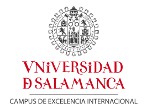Improving experimental cancer therapy through a better understanding of tumor physiology
ROGER CHAMMAS
Title
Improving experimental cancer therapy through a better understanding of tumor physiology
Abstract
Cancers behave as organoids, composed not only by genetically modified tumor cells, but also by a variety of non-tumoral cells, such as fibroblasts, macrophages and endothelial cells among others. Cellular interactions within this organoid dictate the rate of tumor progression, and therefore the accumulation of heterogenous genotypes which characterize the tumor mass at the moment of diagnosis. Evidence for both homotypic and heterotypic cooperation between cells within the tumor microenvironment will be shown. Targeting these interactions has proven an effective strategy to control tumor growth along chemotherapy in experimental model systems. Upon experimental chemotherapy, cell death within the microenvironment can trigger a homeostatic prosurvival response, at least in part dependent on lipid mediators, leading to the emergence of chemoresistance. Understanding the molecular mechanisms of this homeostatic response seems necessary to increase the effectiveness of conventional therapies. On the other hand, angiogenesis and vasculature function are critically altered in tumors, which are usually ill-perfused. Evidence for activation of both angiotensin and bradykinin-dependent pathways within the tumor microenvironment will be discussed. Blockage of such pathways may control not only tumor angiogenesis, but also the distribution of drugs within tumors when adequately used.






